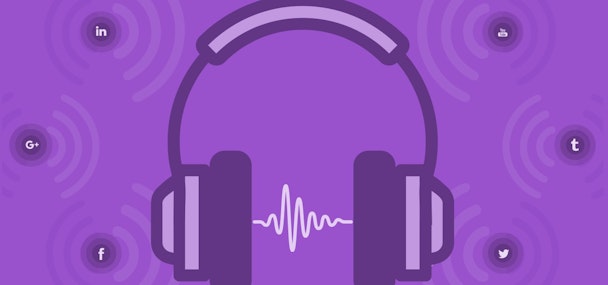How to master social listening like a boss
A large portion of your customer journey is happening outside of your brand’s owned channels - much larger than you probably realize. Only 15% of US adults say that they trust social networking profiles from companies or brands - so if you want to understand your target audience better, analyzing data from historical brand interactions simply isn’t enough.

Social listening
It’s crucial to understand how your audience niche is moving and behaving in their natural habitat, out there in the public sphere.
Social media listening, put simply, is a way to gather trends in the content being created by your customers (both present and future) across social networks. 63% of online US adults post original content on social media weekly or more often, and it’s statistics like this that validate the breadth of coverage social listening can offer - if you use it in the right way.
We’ve heard these a million times before - the age of the customer, customer obsession, pull-marketing - whatever your chosen buzzword is, the key theme here is that the customer is now in control of your brand, and this is only going to become more true in 2017. What’s more, marketers often find themselves downwind of the innovations introduced by social networks, and this leads to a customer landscape that is constantly changing. The tactics that deliver this quarter might not hold true in the rest.
Social listening is a great way to keep afloat in this constant state of flux. It offers real-time insights into the changing trends in your audience’s conversation, and it can help you predict short-term and long-term brand health. If you’re not able to take the current temperature of your customer landscape quickly, you’ll be hard-pressed to identify when you’re audience is shifting, why it’s happening and how you can involve potential new customers.
So how can you employ social listening to deliver real value for your marketing team?
1. Define your objective.
What are the gaps in your knowledge when it comes to understanding your audience? Is there a particular stage on the customer lifecycle that you’re struggling to deliver to? Are you missing your lead generation goals consistently and need to identify new channels to generate new business? Are you about to launch a new product or campaign and want to measure the reaction in real-time?
Entering a social listening project with clearly defined objectives is crucial. Without this, you’ll run the risk of overwhelming your team with reams of nonsensical data and no clear path to act - this is a waste of time and resources. It can be helpful to establish a concrete hypothesis when you’re building a listening query. This will help you process the data into a concrete takeaway, and will empower your marketing to see social media as a source of actionable data insights.
2. Use social listening to identify opportunities...
Social media is a golden space for finding new customers and bringing them onboard, and social listening can help you unlock these opportunities. For example, using a social listening software tool allows to set up a listening query to monitor mention of your vertical + an intent keyword. Tracking hashtags is another option.
Say you’re the tourism board in Copenhagen, you might want to listen out for ‘Copenhagen + food’ ahead of an upcoming food festival that will likely attract a lot of tourists.

As you can see in this example, it’s pretty easy to get a sense of which demographics have an interest in traveling to Copenhagen and why. This is a great to identify lead generation opportunities. As the brand, all you have to do is get involved in the conversation.
...or avoid trouble brewing
Two monumental PR disasters recently overtook Pepsi and United Airlines. They began with a tone-deaf ad and the most heavy-handed customer service fail yet caught on camera – then were compounded by the companies’ attempts to play them down. Both initially seemed unaware of the gravity of the situation. Pepsi has since withdrawn the ad and United has tried a couple more rounds of more contrite apologies. But not before some pretty catastrophic brand damage was done.
You can be sure that global brands like these do employ social media tools, and perhaps these did contribute to the penny eventually dropping. With social listening, alarm bells would have instantly sounded as brand mentions, hashtags and negative sentiment scores spiked – why these weren’t acted on faster we can only speculate.
3. Set up a workflow to manage the data.
While listening can yield a fairly accurate real-time snapshot of your audience across social, it’s most powerful when combined with your organization’s other data streams. Think about it, what if you could piece together a customer’s data story from the moment they discovered your brand through to the moment they became an advocate of your services? Combining listening data with your CRM is great way to start building this larger picture.
Most brands keep their customer data sources locked in disparate systems that are difficult or expensive to connect. What’s more, it can be difficult for marketing departments to make data connectivity a priority within the organization – but unifying your customers’ data story is crucial.
This can achieved through integrations. By building a martech stack that brings CRM, social and other relevant data together, you can collect insights on everything from transactional, to behavioral to emotional.
It’s a kind of a perfect generational union. Real-time social data will continuously refresh what you know about your customers and prospects. Free of the silos, this far more rounded data will help you to deliver contextually relevant experiences, rather than just content designed for conversions.
Manita Dosanjh is PR and communications executive at Falcon.io.

